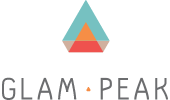Imagine the difference it would make if Australia’s arts and cultural heritage collections were all easily available online. If, simply by taking a smartphone out of their pocket, turning on their PC or swiping their tablet:
- artists could take inspiration from vintage designs and the works of master creators
- teachers could bring Australian citizenship to life through objects and stories
- researchers could discover the information they need to produce valuable new insights
- families could explore their own histories
- everyone, irrespective of socio-economic factors, diversity, location and disability could have the same opportunity to access collections online.
It is intended that all this can be achieved through the Digital Access to Collections initiative.
Current status
Major national initiatives (Trove and Atlas of Living Australia) have put Australia at the cutting edge of digital access to collections, alongside Europeana and the Digital Public Library of America. There is considerable interest and effort in making collections across Australia digitally accessible and there is a significant amount of activity behind the scenes in terms of digitisation which is not yet reflected in the volume of material available via the internet.
The importance of a national aggregator for arts, culture and humanities data has been recognised in the Draft National Research Infrastructure Roadmap. There are some outstanding examples of cooperation led by major institutions and by local government to support smaller arts, culture and heritage organisations. These are generating impressive results, but the few pockets of collaboration are not reflected evenly across Australia. Most smaller organisations are tackling collection management, documentation, technology, skills and resource challenges on their own and having to ‘reinvent the wheel’. They also lack advice on a range of issues, including security, permissions and significance.
As a result, only a fraction of the materials that could be made digitally accessible is available to users, whether they be students, researchers, artists, historians or interested members of the community, in Australia or overseas.
Enablers
Factors that support digital access tend to be the mirror image of those which form barriers. In order to achieve digital access to elements of collections identified as necessary and significant:
- government at all three levels must acknowledge the importance of digital access to collections and provide leadership and direction.
- major cultural institutions and regional networks must be funded to support smaller organisations through all aspects of the journey to digital access.
- there should be consensus around national aggregated platforms and the resourcing necessary to sustain them in the long term.
- the value of the contribution of smaller organisations to the national cultural agenda should be recognised and publicly acknowledged.
Eight key strategies have been identified to address these.
The project
In May 2016, GLAM Peak received funding from the Australian Government through Catalyst, the Australian Arts and Culture Fund, to support a national initiative designed to progress digital access to collections.
GLAM Peak commissioned heritage consultants Rebecca Jones and John Petersen to prepare the evidence base required for:
- a draft national framework, which in turn would set out the principles and strategies to achieve the nation’s ambition for digital access to a rich diversity of Australian content by national and international audiences
- a case study-based prototype toolkit to support capacity building in the sector, particularly for smaller organisations, and knowledge transfer between collecting institutions of all types, sizes and jurisdictions.
The full report is available as a PDF below, as is the draft national framework.
Digital Access to Collections – Stage 1 report (PDF)
Digital Access to Collections – Draft national framework (PDF)
